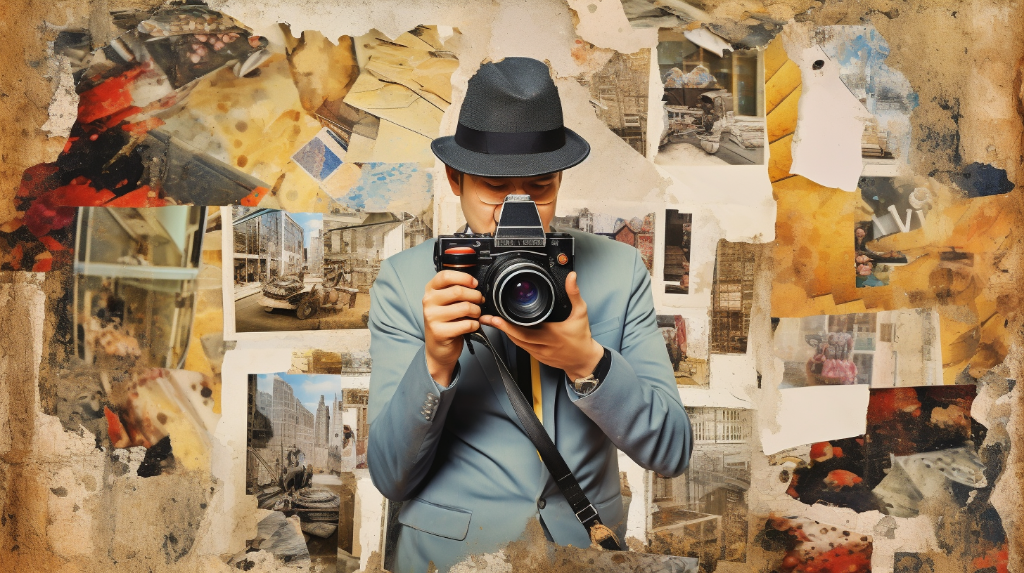How to Properly Credit a Photographer

In the creative world, understanding how to give appropriate credit to photographers is essential. Not only is this a matter of respect and professional courtesy, but it’s also a legal requirement. When freelancers use a photographer’s work, they must ensure they are correctly acknowledging the contributions of the photographer. This guide will provide freelancers with a detailed understanding of how to correctly credit a photographer’s work, helping to foster a culture of respect and recognition, while also fulfilling legal obligations.

Understanding the Importance of Crediting Photographers
Crediting photographers might seem like a small detail, but it carries significant importance. Why? It all boils down to two main reasons: recognition and legal obligation. Recognition is about respect, acknowledgment, and appreciation. It helps photographers receive the recognition they deserve for their work and can lead to more opportunities. On the other hand, the legal obligation is about copyright law. Photographers have the right to be identified as the author of their work, and failure to do so can lead to legal repercussions.
The Legal Implications of Not Crediting Photographers
The legal implications of not crediting photographers can be serious. When someone uses a photograph without properly crediting the photographer, it can be considered a violation of copyright law. Copyright law protects the rights of creators, including photographers, by giving them exclusive rights to their work. This includes the right to be credited when their work is used. Violations of copyright law can lead to legal action, including lawsuits. In some cases, the individual who failed to credit the photographer may be required to pay damages. Therefore, understanding how to credit photographers is not just a matter of professional courtesy, it’s also a legal necessity.
The Basics of Crediting Photographers
Before you can credit a photographer, you must first understand the fundamental steps involved. Giving credit is not merely a matter of pasting a name onto an image; it requires careful consideration and attention to detail. Let’s delve into the basics of crediting photographers.
Locating Photographer Information
The first step in crediting a photographer is finding their name and other relevant information. But where do you look for this information?
Usually, when you purchase a photograph or download it from a free stock photo website, the photographer’s name is provided. It may be listed under the photograph or included in the file’s metadata. However, if the photographer’s name is not readily available, you might need to conduct a reverse image search to track down the original source.
Remember, the goal is not just to find the name but also any other pertinent details such as the date the photograph was taken or the name of the photo itself, if applicable. This information can add important context to your credit.
Properly Incorporating Credit in Your Work
Once you have the necessary information, the next step is to incorporate it into your work. But how do you do that properly? Let’s break it down into simple steps.
- Placement: The credit should be placed close to the photograph. This could be directly beneath the image, in the caption, or in the footer of the page. The goal is to ensure that anyone who sees the photograph can easily identify the photographer.
- Format: The standard format for a photo credit is “Photo by [Photographer’s Name].” However, this can vary depending on the context. For instance, in academic papers, the format may be different.
- Additional Information: If you have more information about the photograph, such as the date it was taken or the name of the photograph, include it in the credit. For example, “Photo by [Photographer’s Name], ‘[Photo Name]’, [Year].”
- Consistency: Ensure that you use a consistent style for crediting photographs across your work. This aids in readability and professionalism.
Remember, crediting a photographer is not just a formality; it’s a way of acknowledging their creativity and hard work. By following these steps, you can make sure you’re giving photographers the recognition they deserve.
Best Practices for Crediting Photographers
In the world of creative freelancing, properly crediting photographers is incredibly important. Not only does it respect the photographer’s hard work, but it also ensures you are legally compliant. Here are some best practices that can help you make sure you’re doing it right.

Placement of Credits: Always place the credit information where it can be easily seen, usually directly below the image or at the end of the article. The goal is to ensure that anyone viewing the image can instantly identify the photographer.
Use of Copyright Symbols: It’s a good idea to use the copyright symbol © when crediting photographers. This symbol immediately communicates that the work is protected by copyright law, adding an extra layer of protection for the photographer.
Complete Information: When possible, provide the photographer’s full name and, if available, their professional website or social media handle. This not only gives proper credit but also allows interested viewers to explore more of the photographer’s work.
Consistent Formatting: Ensure that you use a consistent format when crediting photographers across your projects. This helps to maintain professionalism and makes it easier for readers to locate credit information.
Common Mistakes in Crediting Photographers and How to Avoid Them
Crediting photographers might seem straightforward, but it’s easy to make mistakes, especially when you’re not familiar with the process. Here are some common errors and how to avoid them.
Misattributing the Photographer: Always ensure that you attribute the correct photographer. Misattribution can lead to legal trouble and damage your professional reputation. Double-check the photographer’s name and any other identifying information before including it in your work.
Incorrect Placement of Credit: As mentioned earlier, the placement of credit is crucial. If the credit is hidden or difficult to find, it defeats the purpose. Always place the credit where it can be easily seen.
Not Requesting Permission: In some cases, you might need to ask the photographer for permission to use their work, especially if you’re using the image for commercial purposes. Always ask for permission when in doubt.
Overlooking Copyright Symbols: The use of the copyright symbol © is not just a nice touch—it’s a crucial part of crediting photographers. Don’t overlook it.
Case Studies: The Right and Wrong Way to Credit Photographers
In this section, we will be examining real-life scenarios that demonstrate the right and wrong ways of crediting photographers. These case studies are designed to help you put the principles we’ve discussed into practice and avoid common pitfalls.
| Case | Scenario | Right or Wrong | Explanation |
|---|---|---|---|
| 1 | A blogger uses a photographer’s image and credits the photographer in a footnote at the end of the article. | Right | Although the placement may vary, the blogger gave credit where it was due, respecting the photographer’s rights. |
| 2 | An online magazine uses an image found on a stock photo website but fails to credit the photographer, assuming it’s not necessary. | Wrong | Even if an image is sourced from a stock photo website, the photographer must still be credited unless explicitly stated otherwise. |
| 3 | A freelancer uses a photographer’s image in a client project and includes the photographer’s name in the project’s credits page. | Right | By including the photographer’s name in the project credits, the freelancer properly acknowledged the photographer’s work. |
| 4 | A social media influencer uses a photographer’s image in a post but only tags the photographer in the comments. | Wrong | Tagging the photographer in the comments is not sufficient; credit should be given in the image caption to ensure it’s clearly visible. |
Key Takeaways and Final Thoughts
In this guide, we’ve covered the importance of crediting photographers, the legal implications, the basics of how to credit, best practices, common mistakes, and concrete examples. Now, let’s summarize the key points for quick reference:
- Always give credit to photographers, regardless of where you found their work.
- Failure to credit a photographer can lead to legal consequences.
- Locate the photographer’s name and any relevant information to include in your credit.
- Ensure the credit is visible and not hidden in footnotes or comments.
- Use the copyright symbol © when necessary and appropriate.
- Avoid common mistakes such as assuming that images from stock photo websites don’t require crediting.
Remember, crediting a photographer is not just about respect and legality, but it’s also about acknowledging the creative effort that goes into each photograph. So, next time you use a photographer’s work, make sure you give credit where it’s due!
Get Organized & Win More Clients
Kosmo has everything you need to run your freelancing business.